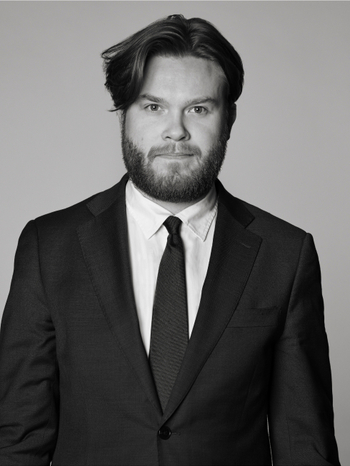Ivan Aguéli
Spanish Landscape
Executed in 1916. Oil on canvas mounted on panel, 19.5 x 24.5 cm.
Alkuperä - Provenienssi
Algot Wahlin's collection
Private Collection
Näyttelyt
Nationalmuseum, Stockholm, "Aguéli-utställningen", May - June 1939, cat. no 165.
Helsinki, Finland, "Aguéli - Isakson-utställningen", 1948, cat. no 57
Valby Kunstforening, Frederiksberg Rådhus, Denmark, "Aguéliudstillingen", 25 February - 12 March, 1961, cat. no 103
Kirjallisuus
Axel Gauffin, "Ivan Aguéli. Människan - Mystikern - Målaren", part II, 1941, listed in catalogue on p. 317 with cat. no 209 and illustrated p. 282.
Gunnar Ekelöf, "Svenska konstnärer - Ivan Aguéli", 1944, illustrated full page, plate 30.
Muut tiedot
Aguéli was born in Sala, Sweden, but spent most of his life abroad, with his works featuring landscapes from France, Spain, India, and Egypt. Aguéli was a globetrotter, a seeker, and a boundary-crosser - in painting as well as in religion and philosophy. In 1911, the artist found himself back in Stockholm, attending a painting school under Carl Wilhelmson, and the following year he exhibited at the Konstnärsförbundet exhibition. The summer of 1912 marked the beginning of what would turn out to be his last journey, ending tragically in a train accident outside Barcelona five years later, at the age of 48.
The journey began just as his first one had 22 years earlier, starting with France. It is unknown where he spent the summer months, but by autumn he had settled in Paris. This was where he first arrived in 1890 on his initial study trip, being introduced to new art and ideological currents. He studied under Émile Bernard and met artists like Cezanne and Gauguin. When he returned to Paris in the autumn of 1912, he began studying at l’Académie Humbert on Boulevard Clichy. He reconnected with his former lover Madame Huot, a person who had been significantly influential in Aguéli's life and art. She was a poet, occultist, and animal lover, and, as Ulf Linde writes, she and Aguéli would make excursions in Paris to rescue sick cats, which they then cared for in her apartment.
Just as 19 years earlier, he traveled from France to Egypt. In December 1913, Aguéli landed on the coast of Africa to see for the last time the city that had meant so much to him. The move made the artist nervous, and he moved from hotel to hotel, filled with memories from his first significant visit. Here, he studied Arabic and Islamic philosophy at the prestigious al-Azhar University and by the late 1890s called himself a Mohammedan Abdul Hâdi. This time, he stayed in Egypt between 1913-1916, a period of intense and productive work.
However, the outbreak of the First World War made the country unstable, leading to Aguéli being expelled and moving to Spain, where he would spend his final year until the train accident in 1917. It was during this last year in Spain that the auction's painting was created. We see here the stylistic language that became his hallmark, namely a landscape painting in a small format with a cool and muted palette and a beautiful interplay between clearly defined colour fields.





































